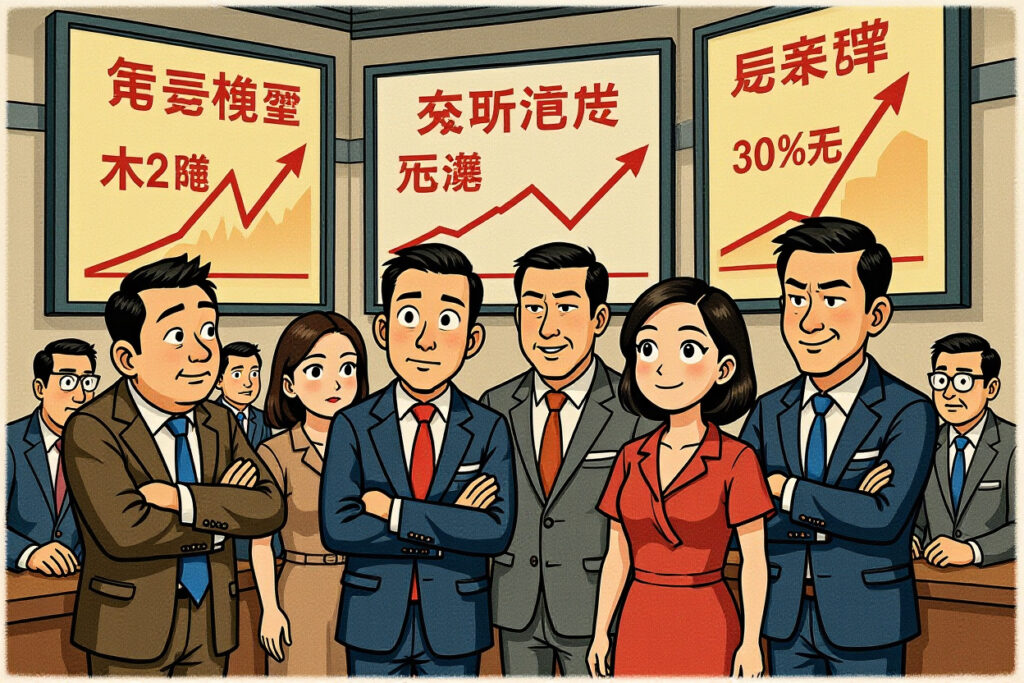China’s Securities Analyst Community Reaches Historic Milestone
The number of securities analysts in China has reached unprecedented levels, surpassing 6,000 professionals for the first time in history. This remarkable growth comes at a critical juncture for the industry as it faces significant structural challenges and transformative pressures.
According to data from the Securities Association of China (中国证券业协会), the analyst count reached 6,162 professionals as of September 19, marking a significant milestone for China’s financial research ecosystem. This expansion represents both opportunity and challenge for an industry navigating fundamental changes in revenue models and client expectations.
Executive Summary: Key Market Implications
- Securities analyst numbers reached record high of 6,162 professionals, reflecting continued industry expansion despite market headwinds
- Commission income declined over 30% in first half 2025 due to mutual fund fee reforms, forcing research houses to seek alternative revenue streams
- Recruitment strategies diverge significantly between large firms emphasizing internal development and smaller institutions relying on external hiring
- Industry transformation accelerates toward non-commission business models including international expansion and fintech integration
- Headcount growth at top institutions shows signs of moderation as business models evolve
Analyst Population Growth Trajectory
The securities analyst community has experienced remarkable growth over recent years, with the current expansion representing the fastest period of professional development in China’s capital markets history. The securities analysts reach historic high numbers that demonstrate the industry’s commitment to research capabilities despite emerging challenges.
Historical data from Oriental Wealth Choice shows that the analyst population broke through the 3,000 mark in 2018, then fluctuated below 4,000 for four years before crossing the 4,000 threshold in 2022. The rapid acceleration saw numbers exceed 5,000 in 2024, with the current record representing nearly 100% growth since 2018.
Growth Drivers and Market Dynamics
Industry experts attribute this expansion to two primary factors. First, the pre-fee reform period saw rapid institutional investor expansion creating substantial talent gaps that prompted aggressive recruitment, including mass hiring of recent graduates. These professionals have now completed the required experience period and registered as certified analysts.
Second, numerous medium and smaller securities firms have entered the sell-side research arena, attempting to achieve competitive advantage through strategic hiring. This has created additional demand for experienced professionals and accelerated overall industry growth.
Leading Institutions and Market Concentration
The distribution of analysts across institutions reveals significant concentration among top firms, with three securities companies now employing over 300 analysts each. China International Capital Corporation Limited (中金公司) leads with 344 analysts, followed by Guotai Junan Securities (国泰君安证券) with 303 analysts after recent mergers, and CITIC Securities (中信证券) which recently crossed the 300-analyst threshold.
Other major players include Industrial Securities (兴业证券) with 195 analysts, Shenyin Wanguo Research (申银万国研究所) with 189 professionals, and Huatai Securities (华泰证券) employing 181 analysts. The concentration among top firms demonstrates the resource advantage larger institutions maintain in the competitive research landscape.
Regional and Specialization Patterns
Geographic distribution shows continued concentration in financial hubs including Shanghai, Beijing, and Shenzhen, though secondary financial centers are gaining traction. Specialization patterns indicate growing focus on technology, healthcare, and green energy sectors reflecting China’s economic transformation priorities.
Divergent Recruitment Strategies Emerge
The methods through which firms are expanding their research capabilities reveal strategic differences between established players and emerging competitors. Large institutions predominantly focus on internal development and promotion, while smaller firms rely heavily on experienced hires from competitors.
CITIC Securities exemplifies the internal development model, with 59 of 62 newly registered analysts coming from internal promotions versus only 3 external transfers. Similarly, Industrial Securities promoted 32 internal professionals compared to 9 external hires among their new registrations.
Aggressive Hiring by Emerging Players
Several medium-sized firms have pursued aggressive external hiring strategies to rapidly build research capabilities. Guojin Securities (国金证券) added 56 analysts with over 30 coming from other institutions, including a 12-analyst team from Min Sheng Securities (民生证券) led by Chief Strategist Mou Yiling (牟一凌).
East Money Securities (东方财富证券) added 34 analysts including 26 transfers, notably hiring former CITIC Construction Investment (中信建投) Chief Strategist Chen Guo (陈果) as their new Chief Strategist and Deputy Director of Research. These moves demonstrate how securities analysts reach historic high numbers through both organic growth and strategic recruitment.
Industry Transformation Imperative
Despite reaching record staffing levels, securities research houses face unprecedented challenges from regulatory changes and market evolution. The mutual fund fee reform has dramatically reduced commission income, with Wind data showing分仓佣金 (dividend commission) income dropping over 30% year-over-year to 4.46 billion yuan in first-half 2025.
This revenue pressure has created urgent need for business model transformation across the industry. Research departments are actively developing non-commission revenue streams, expanding international capabilities, and integrating financial technology solutions to maintain profitability.
Strategic Responses to Market Changes
Leading institutions have announced comprehensive transformation strategies. Zhongtai Securities (中泰证券) emphasizes balanced development between external revenue generation and internal services, commission income and market influence, industry and industrial research, public and non-public fund clients, and domestic and international operations.
Changjiang Securities (长江证券) is promoting coordination between domestic and international operations while expanding overseas client services. Northeast Securities (东北证券) is intensifying efforts to develop corporate client resources including listed companies and foreign enterprises while exploring new service models.
Growth Moderation and Career Transitions
Evidence suggests that the rapid expansion of recent years may be moderating, particularly among top-tier institutions. CICC reduced analyst count by 3 professionals this year after adding 36, 35, 76, and 48 analysts annually from 2021-2024. CITIC Construction Investment added only 6 analysts compared to 42 in 2024.
Concurrently, increasing numbers of analysts are transitioning to other career paths. Many are moving to buy-side institutions, joining private funds, transitioning to corporate roles at listed companies, or even leaving the industry entirely for education, training, or government positions.
Industry Consolidation and Specialization
The changing market dynamics are likely to drive increased specialization and potential consolidation among research providers. Firms are developing niche expertise in specific sectors or client types while larger institutions leverage scale advantages across multiple business lines.
Future Outlook and Strategic Recommendations
The record number of securities analysts represents both achievement and challenge for China’s financial research industry. While demonstrating commitment to analytical capabilities, firms must navigate fundamental business model transformation as traditional revenue sources decline.
Successful institutions will likely be those that develop diversified revenue streams, deepen client relationships beyond transaction-based services, and leverage technology to enhance research efficiency and delivery. International expansion presents significant opportunity as global investors increase China exposure.
For professional investors, the expanding analyst population offers improved research coverage and market insights, though quality differentiation may increase as firms specialize. Monitoring analyst movement between institutions provides valuable intelligence about competitive positioning and strategic focus areas.
The securities analysts reach historic high numbers at precisely the moment when their value proposition must evolve beyond traditional research services. The coming years will determine which institutions successfully navigate this transformation and which struggle to adapt to the new market reality.




